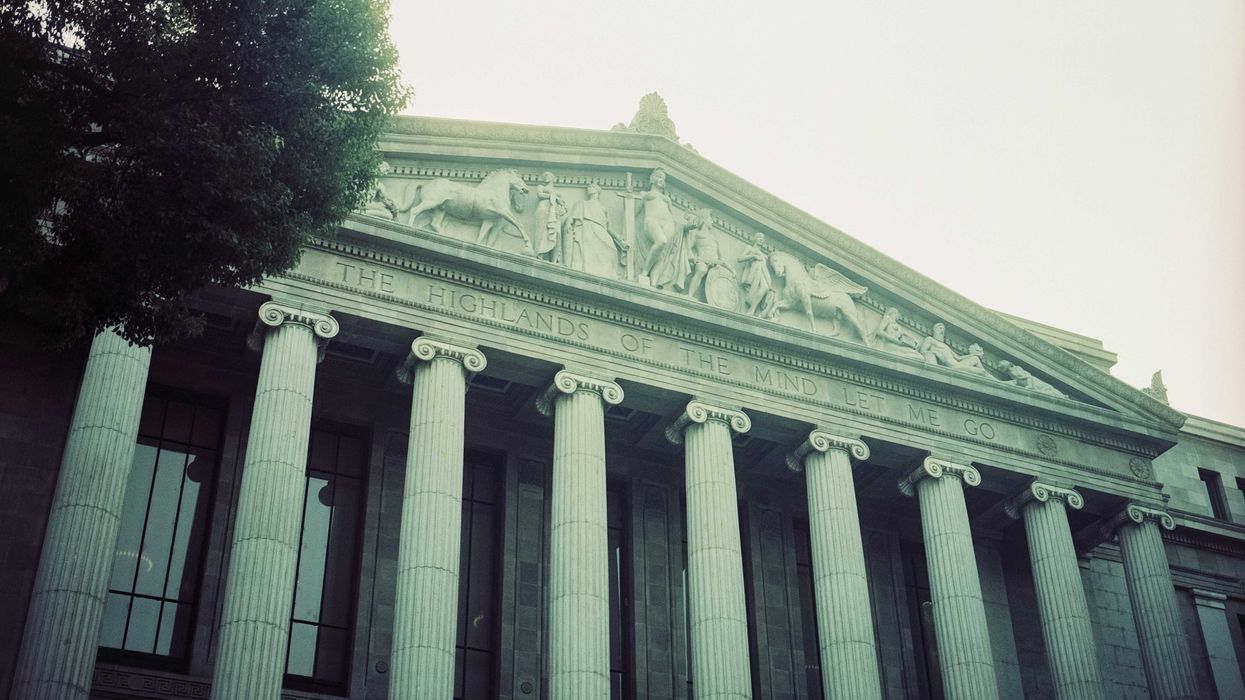Last spring and summer, The Fulcrum published a 30-part series on Project 2025. Now that Donald Trump’s second term The Fulcrum has started Part 2 of the series has commenced.
Elon Musk’s Department of Government Efficiency (DOGE) claims to be cutting fraud and waste from government bureaucracy, which is a laudable goal. But upon closer examination, it’s clear that what Musk/DOGE is actually doing is using “fraud and waste” as an excuse to attack government agencies that Musk and the far right don’t like. Their targets reveal the influence of the controversial Project 2025, and so far, there is little evidence that they are saving very much for American taxpayers.
While the DOGE attacks on the Department of Education and the U.S. Agency for International Development (USAID) have garnered many headlines, less in the news has been about DOGE’s strikes aimed at the Department of Labor. The DOL, along with its affiliated agencies such as the National Labor Relations Board, is the main federal institution protecting workers’ rights and ensuring a fair playing field between employers and employees. Musk is undermining these agencies on many fronts, including operationally and in their data-collecting and enforcement capabilities.
The thirty-seven-page chapter in Project 2025 on labor contains numerous recommendations to weaken not only the federal labor agencies but also labor unions and their advocacy for workers. And President Donald Trump, through Musk, is implementing a number of these recommendations.
The attack on the Department of Labor has followed the familiar pattern that Trump/Musk have used with other federal agencies. They have placed thousands of DOL employees on leave, crippled operations, removed websites from the internet, and tried to seize highly sensitive data and information systems.
The National Labor Relations Board (NLRB) oversees employee-employer relations and guarantees the right of workers to organize into trade unions. President Trump fired NLRB Chair Gwynne Wilcox and NLRB General Counsel Jennifer Abruzzo on January 27. The firing of the general counsel was widely expected as part of normal administration turnover, but the removal of a board member, who was meant to serve out a five-year term, is without modern precedent. NLRB members are Senate-approved to fixed terms and can only be removed for “neglect of duty or malfeasance.”
By firing the chair, Trump has essentially shut down the NLRB by leaving the board below the quorum it needs to operate. The board now has just two members, but under federal law, it needs at least three members to act. The fired chair is suing the Trump administration for exceeding its presidential authority and requesting that she be reinstated as an NLRB board member.
Until there is a verdict, the NLRB will be unable to perform its duties of protecting the rights of workers and monitoring union elections. As just one example of the repercussions, Amazon has demanded that the Trump administration overturn a January 27 union election at its subsidiary grocery chain Whole Foods, when the workers voted overwhelmingly to unionize. In a recent filing, Whole Foods argued that “in the absence of a Board quorum,” the NLRB lacks statutory authority to certify the results.
No doubt, other businesses will be looking to take advantage of the chaos at the NLRB. One of them will be Musk’s company SpaceX. Showing Musk’s clear conflicts of interest, SpaceX has been trying to get the federal courts to declare that the very existence of the NLRB is unconstitutional. Now that Trump is effectively in control of the NLRB, it has sent the court a letter indicating that it is below the quorum needed to make decisions and is withdrawing its legal defense of its own constitutionality. This could well result in the end of the NLRB, which was formed in 1935 as part of the New Deal’s labor protections.
More labor agencies undermined
The next labor agency axe to fall was at the Office of Federal Contract Compliance Programs, which requires federal contractors and subcontractors to commit to nondiscrimination toward workers and tracks compliance by these businesses. It has long been on the conservatives’ kill list —and a major priority of Project 2025—since for decades this program has audited the nation’s largest companies, including Amazon, Google, Meta, Lockheed Martin, and Boeing, to ensure fair pay and hiring to workers of all races and genders.
President Trump’s acting Labor Secretary Vincent Micone issued an order to the OFCCP to “immediately cease and desist” enforcing government contractors’ adherence to anti-discrimination laws and affirmative action initiatives and stop ensuring workplaces are free from illegal discrimination. Ninety percent of the OFCCP staff are being terminated. It hardly seems coincidental that Meta, Google, and Amazon, which were scheduled for compliance evaluations, all contributed $1 million to Trump’s inauguration fund.
Other rollbacks of labor rules passed under the Biden administration are in the works, including ones targeted by Project 2025. These include decreasing the number of workers eligible for overtime pay, decreasing protections for people working in extreme heat, decreasing protections for teenagers hired to do dangerous jobs, undermining a worker’s right to not be subject to abusive noncompete clauses that lock you in a job, and overturning regulations that would allow more workers to collectively bargain and hold their employers accountable for labor violations. Trump is also moving to end the legal defense of a Biden-era U.S. Department of Labor rule on independent contractor status, which will make it easier to treat workers as contractors instead of regular employees and deny them Social Security, Medicare, unemployment, and other labor protections.
Targeting data analysis capabilities
As it has with other federal agencies, DOGE has taken aggressive moves to target labor-related databases that include crucial private information, including about whistleblowers. Among the targeted agencies are the Occupational Safety and Health Administration (OSHA), the Bureau of Labor Statistics, the Wage and Hour Division, and the Federal Employees Compensation Act Claims Administration, all of which hold sensitive worker information, including about labor law violations. These agencies are key sources of data measuring fundamental gauges of the U.S. economy’s health, which shape how policymakers and businesses view the economy. A coalition of labor unions has filed a lawsuit, seeking to keep Musk and his computer moles out of the Labor Department’s internal systems, but it’s hard to say how the conservative supermajority on the Supreme Court will ultimately rule.
Elon Musk’s anti-labor history
The fact that Elon Musk, the world’s wealthiest individual, would be the main agitator for these labor reversals is clearly a conflict of interest. Musk's companies currently have an estimated $3 billion in contracts with the U.S. government and a long history of anti-labor management practices. The Department of Labor has 17 open investigations into Tesla and SpaceX. Tesla assembly workers have accused the company of overwork, speed-up and injuries, sub-standard industry pay, and anti-union harassment.
OSHA has repeatedly fined Musk’s companies for serious safety violations, including exposing Tesla workers to hazardous chemicals and an incident at SpaceX where a worker fell to his death. A judge’s ruling in September 2019 stated that Tesla illegally and systematically threatened and retaliated against pro-union workers. At the peak of the COVID pandemic, Musk downplayed the pandemic’s danger and flouted public health orders, calling California state safety officials “fascist.” With the rest of California’s businesses only semi-open, Musk fully reopened his Tesla assembly plant and ordered his 10,000 employees back to work, in violation of the law.
The Trump administration, led by Musk and DOGE, is clearly implementing many of the extreme directives of Project 2025. This scorched-earth campaign against the Department of Labor, unions, and the U.S. labor force goes well beyond anything Trump did in his first term. Many labor advocates are worried that Trump and Musk will roll back worker standards and labor enforcement that have taken decades to painstakingly craft.
Samples of Phase 2 articles about Project 2025
- Project 2025: Part II
- Department of Education
- USAID
- Department of Homeland Security
- Changes to the Department of Veterans Affairs
- Elon Musk’s DOGE Pursues Partisan Agenda
Samples of Phase 1 articles about Project 2025
- A cross-partisan approach
- An Introduction
- Rumors of Project 2025’s Demise are Greatly Exaggerated
- Department of Education
- Managing the bureaucracy
- Department of Defense
- Department of Energy
- The Environmental Protection Agency
- Education Savings Accounts
- Department of Veterans Affairs
- The Department of Homeland Security
- U.S. Agency for International Development
- Affirmative action
- A federal Parents' Bill of Rights
- Department of Labor
- Intelligence community
- Department of State
- Department of the Interior
- Federal Communications Commission
- A perspective from Europe
- Department of Health and Human Services
- Voting Rights Act
- Another look at the Federal Communications Commission
- A Christo-fascist manifesto designing a theocracy
- Voters oppose the far-right playbook
- The Schedule F threat to democracy
- The Department of Justice
- A blueprint for Christian nationalist regime change
- How anti-trans proposals could impact all families
- The Federal Reserve
- A threat to equitable education




















